Get the weekly SPARTANAT newsletter.
Your bonus: the free E-Book from SPARTANAT.
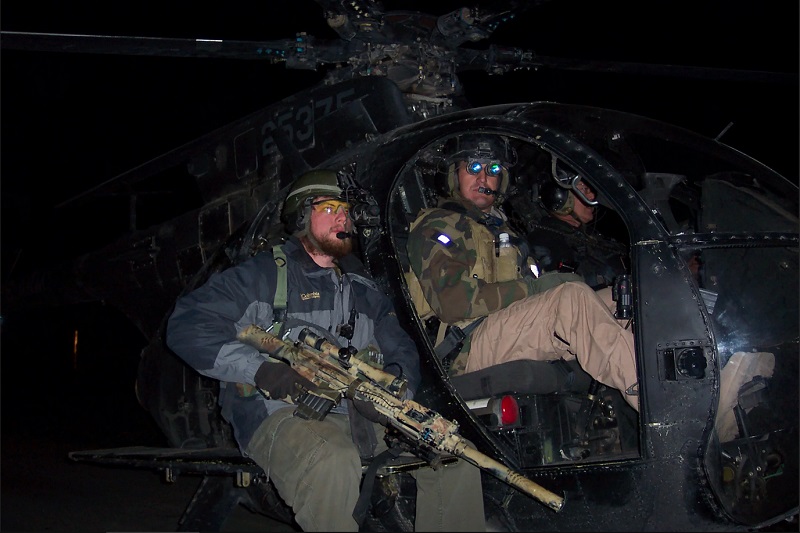
Jack Murphy is a former US Special Forces soldier and was one of the founders of the news portal NEWSREP (formerly SOFREP). Jack now works independently - here is his channel on youtube.com - and is also a SPARTANAT author. We are excited to present an excerpt from his book "Murphy’s Law: My Journey from Army Ranger and Green Beret to Investigative Journalist" - as a Ranger and SR-25 shooter on the outside of a Little Bird helicopter in Afghanistan:
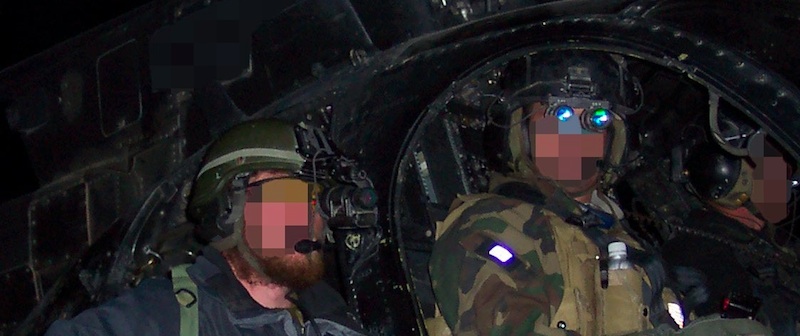 Sometimes things just take a new level of coolness: one night Little Bird helicopters land at our base (FOB). We are supposed to train in the darkness for an air support mission, because, when darkness would take over again, we would have green light for a strike against a High-Value Target (HVT), a Taliban leader. Just a reminder, I was 21 years old and a Ranger back then. I was living the dreams of Special Operations guys. In the past, these were things that probably only experienced Delta Force members were allowed to do. But since September 11th, a lot had changed. Each of us was expected to face every mission.
Sometimes things just take a new level of coolness: one night Little Bird helicopters land at our base (FOB). We are supposed to train in the darkness for an air support mission, because, when darkness would take over again, we would have green light for a strike against a High-Value Target (HVT), a Taliban leader. Just a reminder, I was 21 years old and a Ranger back then. I was living the dreams of Special Operations guys. In the past, these were things that probably only experienced Delta Force members were allowed to do. But since September 11th, a lot had changed. Each of us was expected to face every mission.
Since I had never fired a sniper rifle or a weapon directly from a helicopter, I asked Joe if he could give me some instruction on how to do it properly. Joe was the sniper god for me, who knew exactly what a precision shooter should do. He was a smaller guy with sandy hair and a long red beard, so we joked that he looked Chechen. In talking with him, I found out he had actually grown up all over the world and had a pretty tough upbringing before joining the army. Joe was a tough guy and this was definitely not his first rodeo.
"It's simple," Joe replied. "Do you know how to lead a moving target?"
"Sure."
When shooting at long range, depending on the range of the weapon and the type of projectile, it can take a second or more for the bullet to hit its target. This is called flight time. So when shooting at a moving target, you have to "lead" - that is, shoot ahead of the position where the target is, while pulling the trigger, so that it actually runs into the bullet when it arrives at its location. You shoot where your target will be, not where it is.
"So now it's exactly the opposite: you are moving because you are sitting in a helicopter," Joe explained matter-of-factly. "So your lead has to come from the other side and you fire behind the target."
Wait.
What ?!
Finally, I was also explained how to secure myself on the outside of the Little Bird, so I wouldn't fall off (that's important), how to secure my SR-25 rifle so I wouldn't lose it in flight (also important), and how to shoot at enemy fighters. The safety aspect is no joke. Once a Little Bird landed on a hill. The Delta operator got off the pod and moved forward, not realizing that the tilt of the rotors was different due to the slope. The rotor blades cut off the top of his head. His teammates found the top of his helmet with the skull inside, shaved off in a perfect straight line.
I'm sitting like John Wayne with an SR-25 on the outside of the Little Bird.
But otherwise, everything was actually pretty simple. I would tense up in my place as if I were riding a horse John Wayne style. The rifle lies in my lap, and I use my infrared laser - which I could see with my PVS-14 night vision device - to shoot all the bad guys. At night, the pilots also gave us a briefing on their aircraft before we could start. The Little Bird is like a small, black egg of death. It can drop soldiers directly on the target or be specially equipped with machine guns and rockets for support.
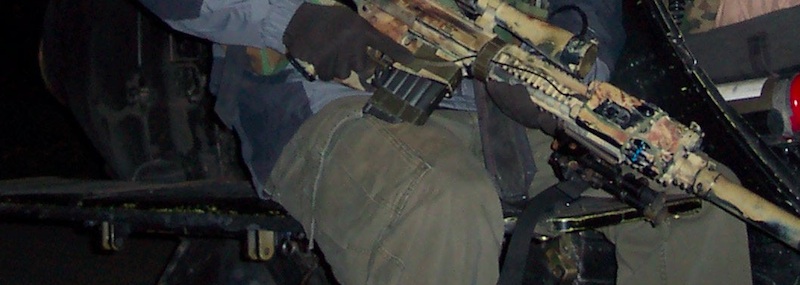 That night, targets were set up for us in a nearby area. We take our place on the Little Bird, give the pilots a thumbs up, and take off. You think flying outside a helicopter at night, using night vision, and shooting weapons sounds cool in itself? Well, I won't lie to you. It's more than cool, damn cool. Joe and I engaged all the targets brought to us by the Little Birds that night. The SR-25 chirps in my lap as I aim the IR laser at the targets and keep pulling the trigger. Then the pilot pulls up, and suddenly I can look straight down at the bare ground beneath me.
That night, targets were set up for us in a nearby area. We take our place on the Little Bird, give the pilots a thumbs up, and take off. You think flying outside a helicopter at night, using night vision, and shooting weapons sounds cool in itself? Well, I won't lie to you. It's more than cool, damn cool. Joe and I engaged all the targets brought to us by the Little Birds that night. The SR-25 chirps in my lap as I aim the IR laser at the targets and keep pulling the trigger. Then the pilot pulls up, and suddenly I can look straight down at the bare ground beneath me.
On the next night, we were waiting for the green light for our mission. In the meantime, I talked to the pilot. He seemed like a really cool guy. He tells me that this was his last combat mission before going home to operate the flight simulator and train new pilots. Needless to say, he was hoping to go out with a bang and really wants the assault team to get their man. Soon after, initial reports come from above. Charlie Company has initiated their ground attack in Humvees.
We wait in the FOB and are ready for takeoff, so that the air and ground elements would arrive at the target simultaneously. Our pilots definitely know what they are doing. Anyone who wants to read about the history of the Special Forces will find that the 160th emerged after the debacle of Desert One in Iran. In 1980, the newly formed Delta Force was tasked with rescuing American hostages held in Iran, but the mission was a failure, mostly due to the use of conventional helicopters. America simply did not have its own air assets for Special Operations at that time. This very special helicopter unit was then formed to conduct the most dangerous missions under the most adverse conditions.
"Jackpot!" - "Yeah," says the voice of the pilot in the headset.
After about an hour, the pilots start their engines and we take off. It's winter in Afghanistan, but I was prepared. I wear a heavy Columbia winter jacket over my gear. Underneath, I have more underwear on, because I expect to turn into an icicle on the side of this Little Bird. I'm excited and ready to go. After the pilot landed his helicopter and we got into position, I sit outside on the bird on my butt. I was John Wayne on the pod, which was an endurance event for my abs, as the wind pushed me backwards. We blasted over the mountains, dusty roads, valleys, and walled terrain that looked empty, except for the faint light trails that could only be seen at night.
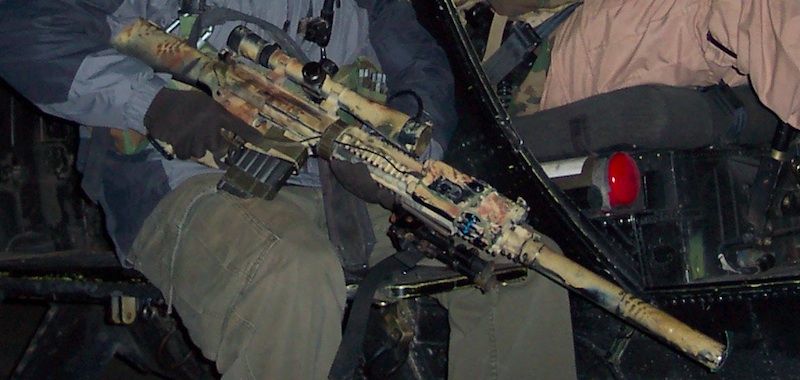 After about half an hour of flight time, we reach the target area, just as Charlie Company advances. The Ranger assault team leaves their vehicles and prepares for the direct attack. We hover over them, watching "squirters" - bad guys trying to run away. The 160th pilots spot someone on the ground trying to flee, and decide to keep the pressure on, giving him something to think about instead of just letting him escape. Through my night vision optic, I watch the Little Bird Joe is flying on, gliding like a dive bomber towards the ground. The pilot skillfully guides the helicopter right into the middle over his target before pulling up at the last moment. The rotor blades swirl the dust on the walls of the target object before the bird disappears back into the darkness of the night.
After about half an hour of flight time, we reach the target area, just as Charlie Company advances. The Ranger assault team leaves their vehicles and prepares for the direct attack. We hover over them, watching "squirters" - bad guys trying to run away. The 160th pilots spot someone on the ground trying to flee, and decide to keep the pressure on, giving him something to think about instead of just letting him escape. Through my night vision optic, I watch the Little Bird Joe is flying on, gliding like a dive bomber towards the ground. The pilot skillfully guides the helicopter right into the middle over his target before pulling up at the last moment. The rotor blades swirl the dust on the walls of the target object before the bird disappears back into the darkness of the night.
The Charlie Company penetrates the target object, shortly after a code word is sent: "Jackpot". It was clear that they had captured the Taliban leader we were after. "Yeah," I hear the voice of the pilot in my headset say.
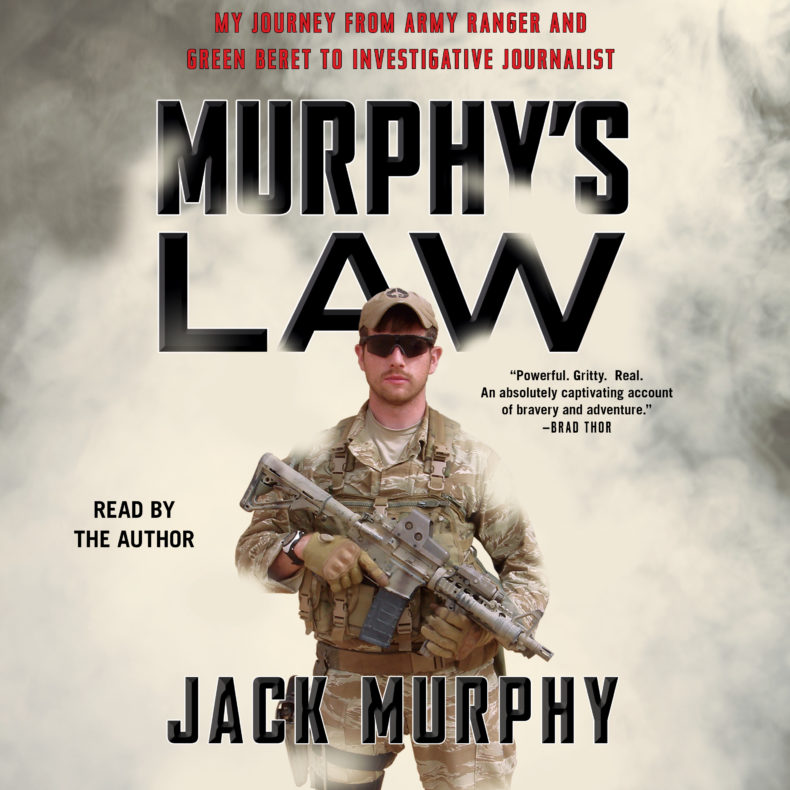 The book "Murphy’s Law: My Journey from Army Ranger and Green Beret to Investigative Journalist
The book "Murphy’s Law: My Journey from Army Ranger and Green Beret to Investigative Journalist" is available directly on Amazon.
Jack on Twitter: @JackMurphyRGR
Jack on Instagram: www.instagram.com/jackmcmurph
Jack on the Internet: jackmurphywrites.com/
SPARTANAT is the online magazine for Military News, Tactical Life, Gear & Reviews.
Send us your news: [email protected]
Ad
similar
Get the weekly SPARTANAT newsletter.
Your bonus: the free E-Book from SPARTANAT.


